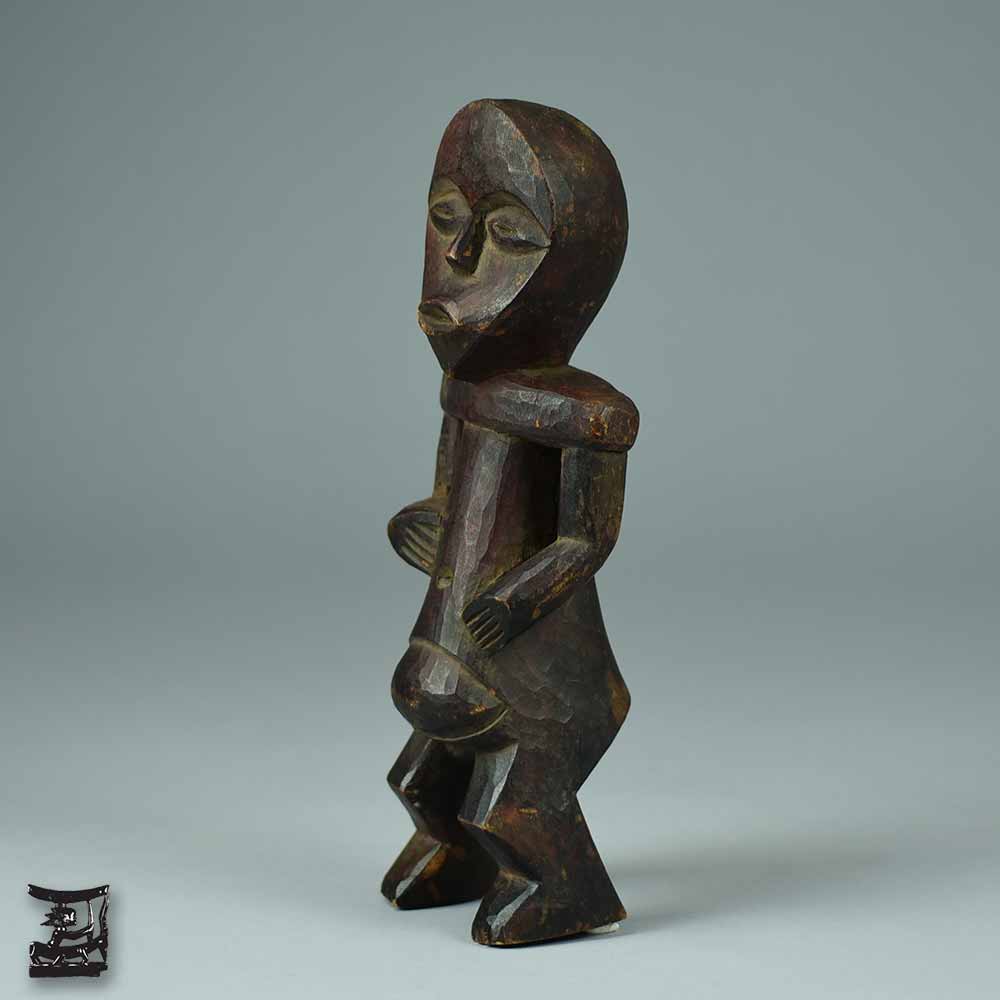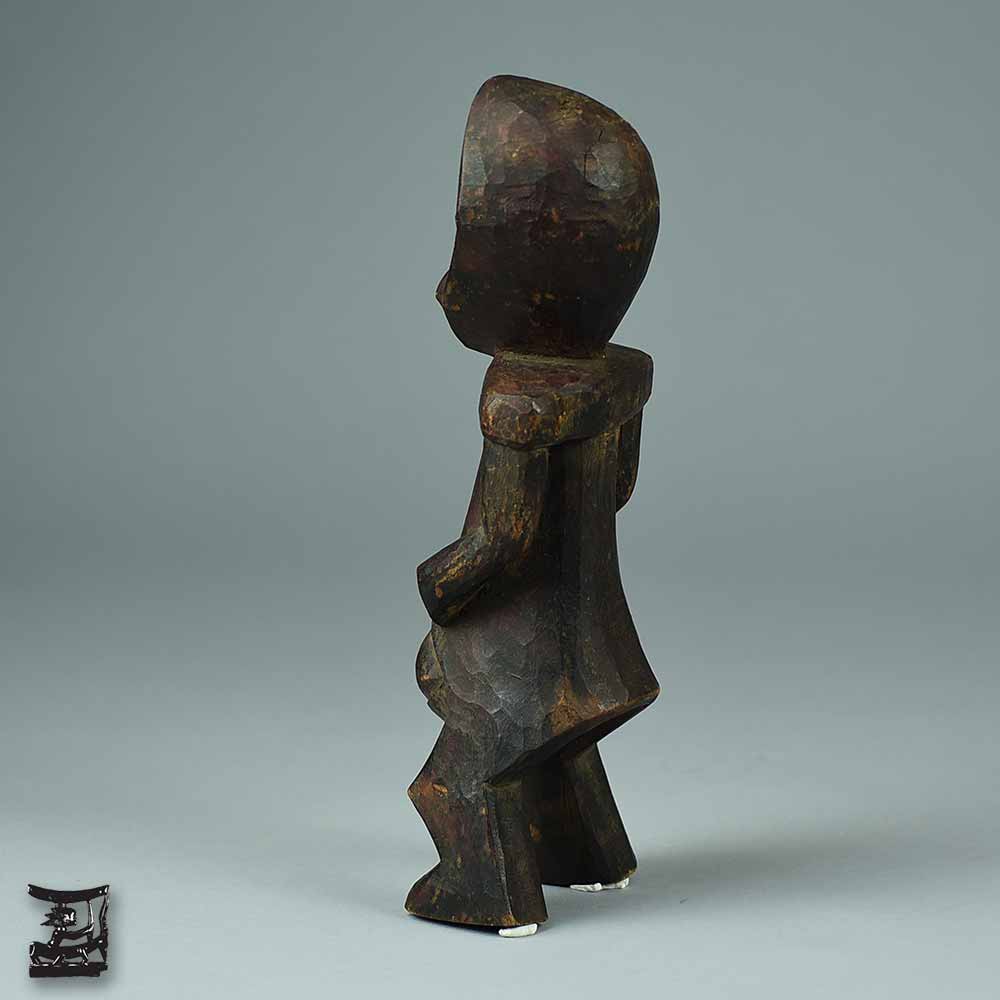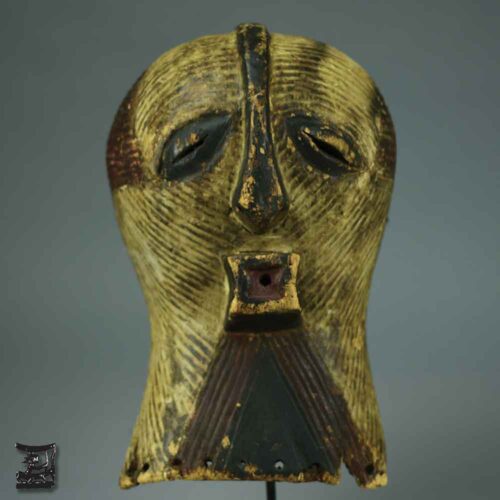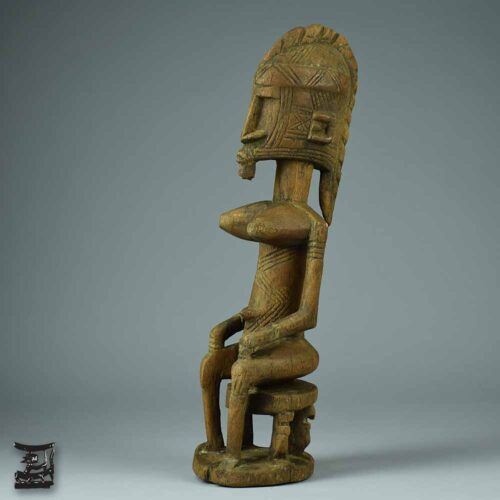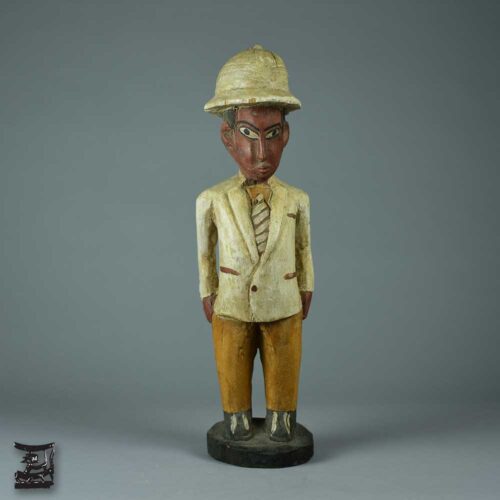Mambila Tadep Figure
$175.00
In stock
In stock
ITEM #:
55034
ETHNICITY:
Mambila
ORIGIN:
Nigeria, Cameroon
SEATED DOGON FEMALE FIGURE:
Mambila Tadep figures, more than just carved wood, they are homes for ancestral spirits. These spirits, the guardians of planting and harvest seasons, hold the key to the Mambila’s abundant agricultural life.
Details

ITEM NAME:
Mambila Tadep Figure
ITEM #:
55034
ETHNICITY:
Mambila
ORIGIN:
Nigeria
MEDIUM:
Wood
DIMENSIONS:
13″ tall (33 cm)
CONDITION:
Very Good.

PROVENANCE:
Jean-Pierre Hallet Estate Collection – California, USA.

CATALOGUE NOTE:
Imagine a lush, green landscape in eastern Nigeria and western Cameroon, where the Mambila people live in harmony with nature. At the heart of their culture is the Mambila Tadep figure, more than just carved wood, they are homes for ancestral spirits. These spirits, the guardians of planting and harvest seasons, hold the key to the Mambila’s abundant agricultural life. In the suaga, the ritual experts’ hut, these figures stand, adorned with generations of offerings and libations, telling the story of a people who celebrate life’s cycles and honor their past. The Mambila, peaceful and governed by wisdom, share a bond with their land and its spirits that transcends generations.
The Spiritual Significance of Mambila Figures
Mambila sculptures and figures are not mere objects of aesthetic pleasure; they are conduits to the ancestral world, repositories of untold wisdom and ancestral might. The Mambila tadep figure, with its symbolic features and ritualistic use, offer a profound window into the Mambila’s spiritual world. These enigmatic carvings, often depicting the afterlife or the transcendental, are revered as protectors and patrons, tasked with safeguarding the hearth, ensuring fertility, and maintaining cosmic balance.
Each tadep and kike figure serves a specific purpose within the Mambila society. Whether adorning the entrance to a dwelling as a guardian spirit or maintaining the sanctity of the granaries where they were once sheltered, these figures are not static idols but living symbols that evolve with the rhythm of their people’s lives. Intricate carvings, perceptible wear, and repair over time narrate their stories — stories of family, community, and the indefatigable spirit of the Mambila.

